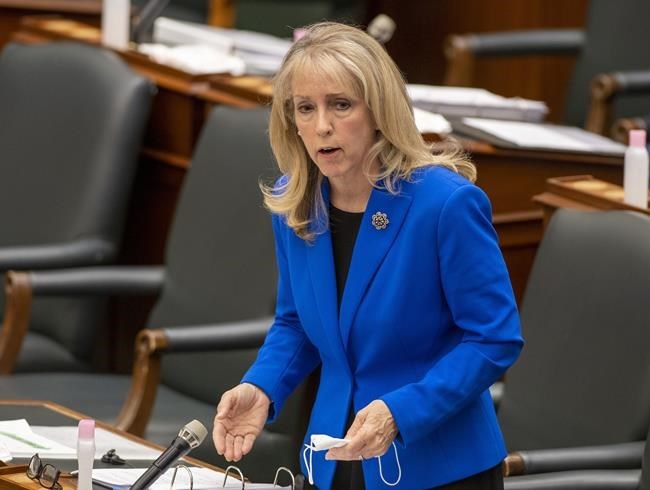TORONTO — The Ontario government has failed to meet its target of providing funding for 8,000 children to receive core autism therapies by the end of the fall, though it won't say by how much.
While a spokesperson for the minister of children, community and social services said the province's target has actually been met, it's a different target than what the government has been publicly working toward all along.
The Progressive Conservative government set about revamping the Ontario Autism Program in 2019, after an initial attempt at a new program early that year led to a large outcry and accusations that it would leave very few children receiving the levels of therapy they need.
The rollout of the newer program has seen delays, but this year the government had been working toward a commitment of "providing 8,000 children with funding for core clinical services by fall 2022," as per language on their website and in press releases.
"We can confirm that we have met our target of registering 8,000 children and youth in core clinical services," a spokesperson for minister Merrilee Fullerton wrote in a statement.
But registration is a different step than receiving funding for services.
Once families are registered for core services, their child is scheduled for a needs determination interview. During that meeting, the funding level is calculated based on several different factors and families are supposed to receive it not long after that.
But people in the autism community say those interviews are being scheduled many months away, leading them to believe there is a sizable gap between the number of children "registered" for core therapies and those who have actually received funding.
"I do not believe that there are actually 8,000 children that are receiving therapy under the core services program," Ontario Autism Coalition president Angela Brandt said in an interview.
Fullerton's spokesperson, Patrick Bissett, did not respond to followup inquiries about how many families have been provided with core services funding.
Since The Canadian Press reported in August that enrolment in the new program was off to a slow start, with 888 children in core therapies at that time, the government has refused to update that number.
Earlier this month, Bissett said significant progress had been made, with 16,575 invitations to core services issued, but he still would not say how many had actually been enrolled.
Tom Wadden, a father of two seven-year-old boys with autism, said he received an invitation to core services in early November with needs determination interviews set for late March.
He eventually got that moved up to January thanks to a cancellation wait-list, but his sons will end up having spent more than five years on the wait-list for services by the time they canget into government-funded therapy. In the meantime, he has been paying out of pocket to get them treatment, funding the smallest amount possible while still seeing progress.
"This situation in the last five years – and we're absolutely not alone – has absolutely taken us to the brink of financial ruin," Wadden said over the phone from his home in Stoney Creek, Ont.
Wadden and his wife have blown through all of their savings and an inheritance from her grandmother, incurred debt on four credit cards and two lines of credit, and tried to sell "everything in the house not tied down." He estimates they have spent about $220,000 on therapy.
"I'm up at night trying to find money and it's just been hanging over our head for so long ... It's been too much of a weight to carry," he said.
"Funding isn't the end of the road. From now, we have a long journey back to climbing out of the hole that we're in now, but at least we can start making plans."
More than 60,000 children are now registered in the Ontario Autism Program. The vast majority have not received core services funding, but most have received some one-time payments, and thousands have accessed other parts of the program including early years services, foundational family services and an entry-to-school program.
Even as more families start receiving funding, Brandt, of the Ontario Autism Coalition, worries about what happens next. A friend was just approved for $43,000 in funding for her daughter, but can't find a treatment provider accepting new clients, Brandt said.
"Over the last five years there's been so many delays, capacity has been completely decimated, so even though some families have cash in hand, they have nowhere to spend it," she said.
"My greatest concern is the ministry is going to use this as an excuse to lower the budget. They're going to say, 'Look, we sent money out to parents. They didn't spend it. So obviously we don't need this much money for the OAP budget.'"
This report by The Canadian Press was first published Dec. 22, 2022.
Allison Jones, The Canadian Press



